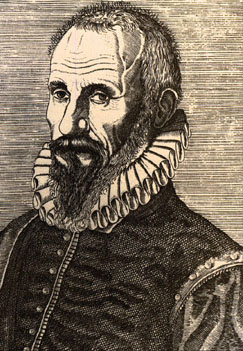| Ambroise Paré  Born: 1510 Born: 1510
Birthplace: Bourg-Hersent, France
Died: 20-Dec-1590
Location of death: Paris, France
Cause of death: unspecified
Gender: Male
Religion: Roman Catholic
Race or Ethnicity: White
Occupation: Doctor Nationality: France
Executive summary: Prominent 16th c. French surgeon French surgeon, born in Laval, in the province of Maine, and died in Paris in 1590. He began life as apprentice to a barber-surgeon in Paris and as a pupil at the Hôtel-Dieu. His earliest opportunities were in military surgery during the campaign of Francis I in Piedmont. Instead of treating gunshot wounds with hot oil, according to the practice of the day, he had the temerity to trust to a simple bandage; and from that beginning he proceeded to many other developments of rational surgery. In 1545 he published at Paris La Méthode de traicter les playes faictes par hacquebutes et aultres bastons à feu, dealing mostly with the treatment of gunshot wounds. The same year he began to attend the lectures of Sylvius, the Paris teacher of anatomy, to whom he became prosector; and his next book was an Anatomy (1550). His most memorable service was to get the use of the ligature for large arteries generally adopted, a method of controlling the hemorrhage which made amputation on a large scale possible for the first time. Like Paracelsus, he writes in the vernacular, while he is free from the encumbrance of mystical theories which detract from the merits of his fellow reformer in Germany. It is only in his book on monsters, written towards the end of his career, that he shows himself to have been by no means free from superstition. Paré was adored by the army and greatly esteemed by successive French kings; but his innovations were opposed, as usual, by the faculty, and he had to justify the use of the ligature as well as he could by quotations from Galen and other ancients. A collection of his works was published at Paris in 1575 and they were afterwards frequently reprinted. Several editions have appeared in German and Dutch, and among the English translations was that of Thomas Johnson (1665).
Do you know something we don't?
Submit a correction or make a comment about this profile
Copyright ©2021 Soylent Communications
|